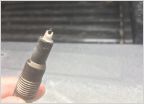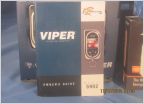-
Welcome to Tacoma World!
You are currently viewing as a guest! To get full-access, you need to register for a FREE account.
As a registered member, you’ll be able to:- Participate in all Tacoma discussion topics
- Communicate privately with other Tacoma owners from around the world
- Post your own photos in our Members Gallery
- Access all special features of the site
Is there a thread about engine wear using 5W-20 etc.?
Discussion in 'Technical Chat' started by hikerduane, Jan 15, 2016.


 Icom F121 2meter Radio / Repeater Use?
Icom F121 2meter Radio / Repeater Use? The Truth About Spark Plugs....
The Truth About Spark Plugs.... GPS Vehicle Tracker
GPS Vehicle Tracker Wiring for Dummies!!! Help us solve some basic/common electrical issues
Wiring for Dummies!!! Help us solve some basic/common electrical issues HELP Viper Alarm Systems 500-600 retail but 200-300 on amazon
HELP Viper Alarm Systems 500-600 retail but 200-300 on amazon










































































